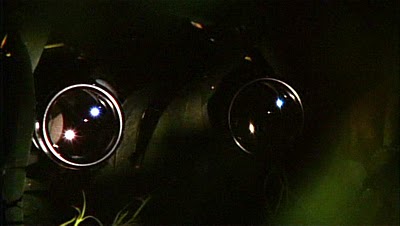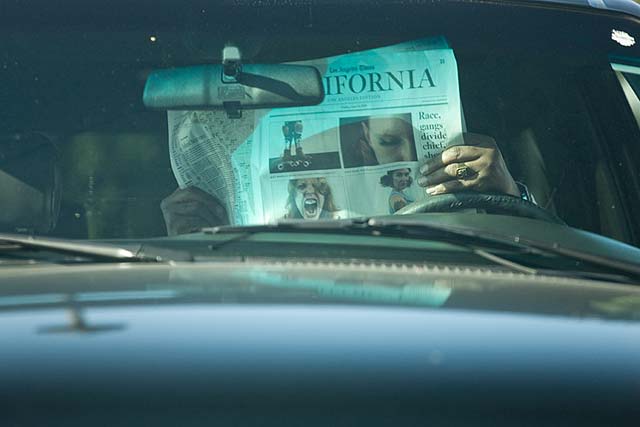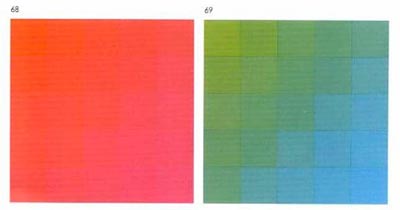
The darkness was like nothing I’d ever seen. I couldn’t see my hand in front of my face; after a while I could barely believe that my hand was there, in front of my face, waving.
That darkness is what I think about when I think of black. I was going to write, the color black, but as every child knows black isn’t a color. Black is a lack, a void of light. When you think about it, it’s surprising that we can see black at all: our eyes are engineered to receive light; in its absence, you’d think we simply wouldn’t see, any more than we taste when our mouths are empty. Black velvet, charcoal black, Ad Reinhart’s black paintings, black-clad Goth kids with black fingernails: how do we see them?
According to modern neurophysiology, the answer is that photoreceptors in our retinas respond to photons of light, and we see black in those areas of the retina where the photoreceptors are relatively inactive. But what happens when no photoreceptors are working—as happens in a cave? Here we turn to Aristotle, who notes that sight, unlike touch or taste, continues to operate in the absence of anything visible:
Even when we are not seeing, it is by sight that we discriminate darkness from light, though not in the same way as we distinguish one colour from another. Further, in a sense even that which sees is coloured; for in each case the sense-organ is capable of receiving the sensible object without its matter. That is why even when the sensible objects are gone the sensings and imaginings continue to exist in the sense-organs.
We “see” in total darkness because sight itself has a color, Aristotle suggests, and that color is black: the feedback hum that lets us know the machine is still on.
{ Paul LaFarge/Cabinet Magazine | Continue reading }
colors, ideas | June 9th, 2010 3:04 pm

Subjective experience poses a major problem for neuroscientists and philosophers alike, and the relationship between them and brain function is particularly puzzling. How can I know that my perception of the colour red is the same as yours, when my experience of the colour occupies a private mental world to which nobody else has access? How is the sensory information from an object transformed into an experience that enters conscious awareness? The neural mechanisms involved are like a black box, whose inner workings are a complete mystery.
In synaesthesia, the information entering one sensory system gives rise to sensations in another sensory modality. Letters can evoke colours, for example, and movements can evoke sounds. These extraordinary additional sensations therefore offer a unique opportunity to investigate how the subjective experiences of healthy people are related to brain function. Dutch psychologists now report that different types of synaesthetic experiences are associated with different brain mechanisms, providing a rare glimpse into the workings of the black box.
{ Neurophilosophy/ScienceBlogs | Continue reading }
photo { Werner Amann }
brain, colors, science | May 19th, 2010 7:32 pm

{ My New Pink Button | Thanks Chris! }
colors, haha, sex-oriented | February 18th, 2010 5:05 pm

It may seem strange to identify a sensation of temperature with the visual realm of color sensation. However, experiments have demonstrated a difference of five to seven degrees in the subjective feeling of heart or cold between a workroom painted in blue-green and one painted in red-orange. That is, in the blue-green room the occupants felt that 59° F was cold, whereas in the red-orange room they did not feel cold until the temperature fell to 52 - 54° F. Objectively, this meant blue-green slows down the circulation and red-orange stimulates it.
Similar results were obtained in an animal experiment. A racing stable was divided into two sections, the one pointed blue, the other red-orange. ln the blue section, horses soon quieted down after running, but in the red section they remained hot and restless for some time. It was found that there was no flies in the blue section, and a great many in the red section.
{ Johannes Itten, The Art of Color, 1920 }
archives, colors | January 28th, 2010 5:24 pm

{ The Crayola’s Law: The number of colors doubles every 28 years | Weather Sealed | Full story }
colors, visual design | January 21st, 2010 8:04 pm






